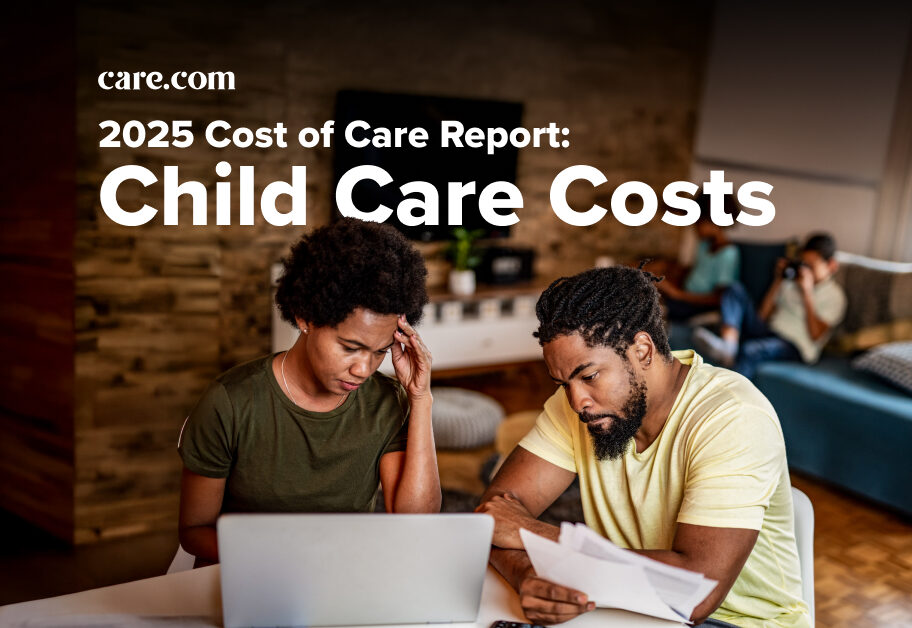If you have a child who’s struggling to thrive and learn in a typical classroom, a 504 plan may benefit them. And while you may have heard the term, unless you have an older child who already has one, there’s a good chance you’re wondering: What is a 504 plan, and how can it benefit my child?
“In public education, a 504 plan is a formal plan that documents accommodations for a student with a disability, giving the student equal access to learn beside peers in the general education classroom,” explains Jennifer Bernheim, founder of Right to Read Advocacy. “Ideally, the 504 plan removes any barriers to learning.”
Here, Bernheim and other education experts break down what a 504 plan is, how to get one in place for your child at school and more.
What is a 504 plan?
A 504 plan provides “children with special needs who don’t qualify for special education services access to tailored accommodations and modified learning experiences,” explains Christopher Hathaway, a former independent school administrator and founder and CEO of Advantage Ivy Tutoring.
“The name arises out of Section 504 of the Rehabilitation Act of 1973 — a federal civil rights law that serves to prevent discrimination against disabled Americans,” Hathaway continues, adding: “504 plans extend to any child with any disability that limits a major life activity and interferes with that child’s capacity to learn.”
It’s important to note that while private schools that don’t receive public funding are not required to provide 504 plans, many offer special accommodations (similar to the 504 framework) for children when provided with documentation.
As Children and Adults with Attention-Deficit/Hyperactivity Disorder (CHADD) explains: “For students enrolled in private schools, educational rights might be established by individual state laws or by those private schools themselves, but federal educational laws do not necessarily apply.”
What qualifies a child for a 504 plan?
“In order to qualify for a 504 plan, a child must have any disability that interferes with their capacity to learn in a general education classroom,” says Hathaway. However, it’s important to note that, unlike individualized education plans (IEPs), which require specific conditions to qualify (more on this shortly), 504 plans have room for nuance and the criteria isn’t strictly limited to learning and/or thinking differences.
“In order to qualify for a 504 plan, a child must have any disability that interferes with their capacity to learn in a general education classroom.”
— Christopher Hathaway, founder and CEO of Advantage Ivy Tutoring
“‘Disability’ includes any condition, physical or mental, that substantially limits a major life activity,” Hathaway continues, noting that “major life activity” can include “walking, talking, breathing, learning, reading, communicating and/or thinking.”
For instance, a student can qualify for a 504 plan if they have a mental health condition, such as anxiety, or a physical condition, such as vision or hearing impairment, or a permanent physical injury, explains Deb Harrison, an education growth and change consultant and mom of two children with 504 plans.
Other non-learning difference conditions that may qualify a student for a 504 plan are:
- Diabetes.
- Asthma.
- Food allergies.
- Environmental allergies (multiple chemical sensitivity).
- Epilepsy.
Depending on how much support is needed, attention deficit hyperactivity disorder (ADHD) is a condition that may qualify a child for a 504 or an IEP.
“If a student with a disability needs accommodations so they can learn in the general education classroom, meaning they need changes to how they learn, then they may qualify for a 504 plan,” notes Bernheim.
What are 504 accommodations and support services?
Just as the criteria required to meet a 504 is broad, so are the accommodations. The main thing to note, though, is your child’s supports should be specific to them.
“The modifications that a student receives really should be determined by their disability and should be specific to that child’s learning needs within the classroom,” Bernheim says. “A student with ADD may receive accommodations such as frequent breaks, preferential seating, 50% more time on tests and quizzes, access to an alternative testing environment, outline of notes prior to class, positive reinforcement and/or daily teacher check-ins to support executive functioning skills.”
“A student with dyslexia (who is no longer receiving services through an IEP) may receive the aforementioned accommodations, as well as access to technology tools such as audiobooks and speech-to-text.”
An example Harrison gives: “A student with a disease that impacts the kidneys may be scheduled in classrooms closer to restrooms.”
Other broad 504 accommodations, per Hathaway and Harrison, include:
- Use of a calculator.
- Larger print on assignments.
- Shorter homework assignments.
- Access to headphones to diminish classroom noise.
- Access to audiobooks.
- Modified test formats or assignments.
What’s the difference between a 504 and an IEP?
“To be eligible for an IEP, a child must have one or more of the 13 disabilities included under the special education law,” Bernheim says, “and that disability must affect educational performance resulting in the need for specialized instruction and may include additional support services, such as occupational therapy, speech language pathology, etc.”
A 504 plan is more broad, Hathaway notes, “requiring only that a child has a disability that interferes with that child’s ability to learn in a general education classroom.” These are children, he notes, without disabilities severe enough to qualify for special education.
The supports under both IEP and 504 plans must be provided free of charge.
Who initiates a 504 plan?
If parents know their child has a specific condition, such as epilepsy, they will more than likely be the party to initiate the 504 process. However, it isn’t uncommon for the school or teachers to suggest a 504 plan.
“The teacher may be the first to identify that the child is having trouble focusing in class, continuously forgetting to submit assignments and not completing tests within the allotted time,” Bernheim says. “Therefore, the teacher may begin the process or share the concerns with the parent for the parent to begin the process.” Harrison notes that a child’s primary care physician may also make the recommendation.
A few things to keep in mind:
- Just because a parent requests a 504 plan, doesn’t mean the child will qualify.
- If the school is the suggesting party, that doesn’t mean parents have to oblige.
“A parent can request a 504 plan for their child, yet this request does not guarantee the child will be granted a 504 plan,” Bernheim says. “The student first needs to be evaluated to determine whether the disability is limiting their ability to learn. When the parent identifies that the child needs support in school, such as preferred seating or extended time on tests, the disability, such as ADD, may not yet be identified. Therefore, through proper evaluation, the disability should be formally identified and then proper accommodations determined.”
“A parent can request a 504 plan for their child, yet this request does not guarantee the child will be granted a 504 plan.”
— Jennifer Bernheim, founder of Right to Read Advocacy
On the flip side, Hathaway explains, “law requires informed parental permission for initial 504 evaluations.” However, he adds, “schools may override a parent’s denial of consent via hearing. Either way, schools are required to provide notice to parents regarding enacting 504 plans and parents have the right to dispute the school’s decision.”
How do students get a 504 plan?
If you’re a parent looking to get your child a 504 plan, but aren’t sure where to begin, the first step should be to speak with the guidance counselor or school 504 coordinator to find out process logistics, such as paperwork required and who to submit to, Harrison notes.
More directly, you can also file a written request for a 504 plan via the school district 504 coordinator, Hathaway notes.
“The written request should be specific and well-supported by relevant documentation [such as a medical diagnosis from a therapist or pediatrician],” he says. “For example, a parent might request a 504 plan for a child with fine motor impairment who needs access to a laptop during class, or a plan for a child with ADHD who needs priority seating and frequent breaks to sustain focus in the classroom. 504 request templates are available for free online.”
“After a request has been filed, the school will hold a meeting to determine whether the child qualifies for a 504, and if so, what accommodation and supports are appropriate,” Hathaway continues. “The child’s schoolwork, medical records and other relevant documents will be reviewed to determine eligibility and action items for the 504 plan.”
What if I encounter resistance from the school regarding a 504 plan?
Bernheim adds that if the child’s disability doesn’t meet the school’s criteria for interfering with learning in a general education classroom, the 504 may be denied. “At that time,” she says, “if the parent is still concerned about the child’s needs, they could consider getting a private evaluation and bringing those results, if different, back to the school.”
How is a 504 plan monitored over time?
According to Hathaway, a re-evaluation of a 504 plan must be conducted by evaluation at least every three years, or whenever there is a question about continued eligibility or a change in the plan.
“There is no further formal monitoring requirement although schools typically track progress through report cards, test scores and parent-teacher conferences,” he says. “Parents are free to check in with the school about a child’s progress under a 504 plan at any time. Establishing meaningful relationships with a child’s teachers is important for any parent with a child with a 504 plan in place.”
Additionally, Bernheim adds, parents should check in with their child frequently — “as often as every day” — regarding their 504 accommodation.
What should I do if my child’s needs are not being met with the current 504 plan?
If the accommodations a child is receiving aren’t helping, Hathaway suggests going to their teacher to trouble-shoot first. If that proves to be unsuccessful, parents can then reach out to the 504 team to suggest a meeting.
“The parent may request additional evaluations and/or other accommodations,” Bernheim says. “If the parent still feels that the child needs additional support, it may be best to seek a private evaluation.”
The bottom line
The process of getting a 504 plan can feel overwhelming, but the benefits are worth it for your child’s continued progress and learning in the classroom.
“504 plans give the student the accommodations needed to learn alongside their peers.”
— Jennifer Bernheim, founder of Right to Read Advocacy
“504 plans give the student the accommodations needed to learn alongside their peers,” Bernheim says. “And these accommodations can provide a confidence boost for a child who has been struggling to keep up. As a mom of a child who has a 504 plan, I have seen a difference. Now that my child can take tests in an alternative environment and has 50% more time on tests, he can complete them with confidence. The proper accommodations could certainly improve student outcomes.”





